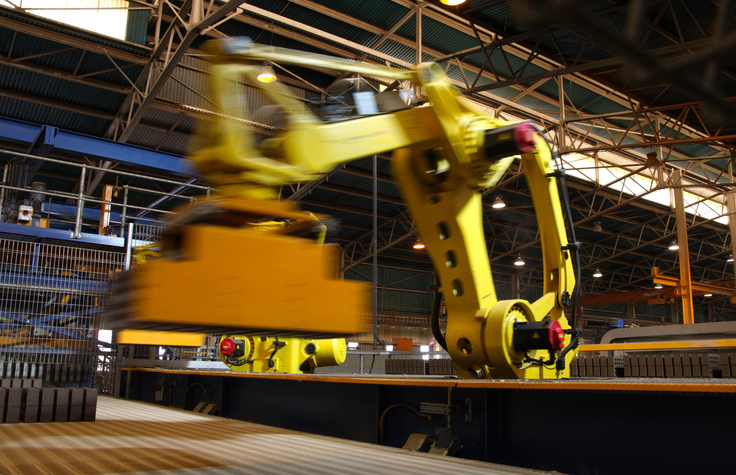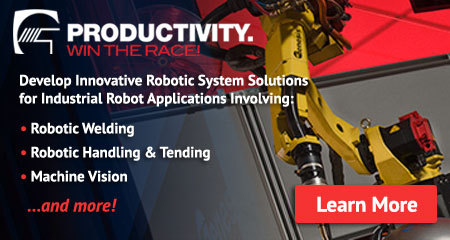Robotic Material Handling and Tending: A Basic Overview

Robotic material handling and tending systems are commonplace in the industrial sector. Material handling refers to robotic arms moving production parts, typically on or off a conveyor belt or to hold a part in place for production. Machine tending is similar, but more specific, referring to a robotic arm to load and unload a stationary production machine.
Both robotic material handling and machine tending systems are in high demand as they reliably deliver productivity gains in a wide range of applications.
The Benefits of Robotic Material Handling and Machine Tending Systems
Much of the benefits of these systems comes from drastically increased uptime. Manual material handling and tending is slow, inconsistent and less productive. Robots can work around the clock, besides small periods of downtime for maintenance, with high levels of consistency.
In addition to increased uptime, robots are typically much faster than manual processes. Decreasing the cycle time of a production part impacts productivity in a positive way. The benefit of shorter cycle times compounds over time and are extremely valuable to manufacturers.
Robotic Material Handling and Tending Produce Real Results
In theory and in practice, robotic material handling and tending solutions deliver major productivity gains. Recently, an agricultural manufacturer was experiencing production bottlenecks for pinion gear drive train components. They needed an automation solution to replace manual loading/unloading for lathe and part washing processes.
After a robotic material handling and tending system was designed and installed, the manufacturer was able to cut cycle time to under 60 seconds per part for 16 different parts while maintaining high levels of uptime. The robotic material handling and tending system had a transformative impact on their operations.
Robotic material handling and tending systems offer many benefits for manufacturers. When designed and implemented properly, they can overcome costly pain points in production, just as in the example above.
There’s more to the story, however, in the example of the agricultural manufacturer achieving exceptional cycle times and uptime. To understand how robotic automation improved their entire production process, read the whole robotic material handling and tending case study.
Posted in Robotic Machine Tending, Robotic Material Handling
